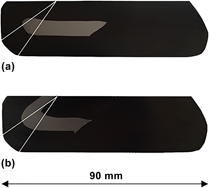Article contents
Microstructure and mechanical properties of ultrafine-grained titanium processed by multi-pass ECAP at room temperature using core–sheath method
Published online by Cambridge University Press: 23 August 2018
Abstract

A commercially pure titanium (CP-Ti) of grade 1 as a hard-to-deform material was processed successfully by ECAP processing up to four passes at room temperature via the core–sheath method using a die with an internal channel angle of 90°. The simulation and analytical calculations demonstrated that imposed back pressure on the core was increased at each pass due to strain hardening of sheath metal (AISI 1015 steel) during deformation which prevented damage accumulation and crack initiation at a high number of passes. The scanning electron microscopy and transmission electron microscopy observations of ECAP-processed Ti revealed a severely deformed microstructure which consisted of a high dislocation density and an average grain size of ∼250 nm. Mechanical properties of four-pass ECAP-processed CP-Ti showed a substantial enhancement of ultimate tensile strength up to 890 MPa associated with a reasonable elongation to failure of 15.3%.
Keywords
- Type
- Article
- Information
- Copyright
- Copyright © Materials Research Society 2018
References
REFERENCES
- 8
- Cited by


